Imagine a vibrant green powder whisked into a steaming cup of tea. That’s Japanese matcha tea, a finely ground green tea with a rich history and deep roots in Japanese culture. Matcha goes beyond just a beverage; it’s a sensory experience steeped in tradition, offering a delightful taste and a glimpse into the heart of Japan.
What is Japanese matcha tea?
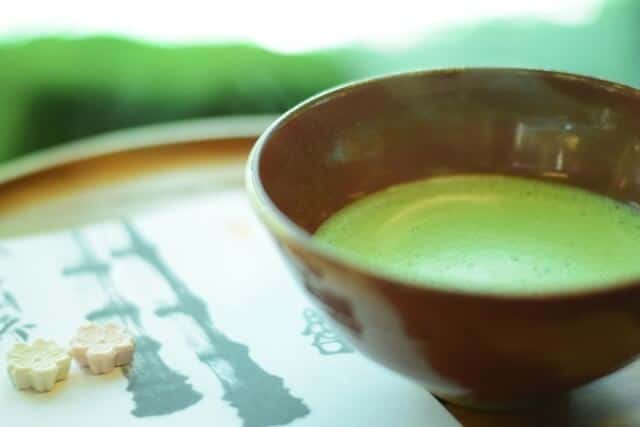
Unlike regular green tea where you steep the leaves in hot water and discard them, matcha is whisked with hot water to create a frothy tea. Matcha is traditionally used in Japanese tea ceremonies. Japanese Matcha tea has a distinct umami or savory flavor with a slight sweetness. It is also believed to have numerous health benefits due to its high concentration of antioxidants and nutrients.
Matcha is a type of green tea made by grinding tencha into a fine powder using a stone mortar. There are roughly two types of matcha. They are light brown (Usucha) and dark brown (Koicha). The matcha that you often imagine is a light tea. The difference between the two is the strength and tea leaves. Koicha uses 2 to 3 times more matcha than light tea. If we were to compare it to coffee, dark tea would be espresso, and light tea would be regular coffee.
Japanese matcha tea Origin
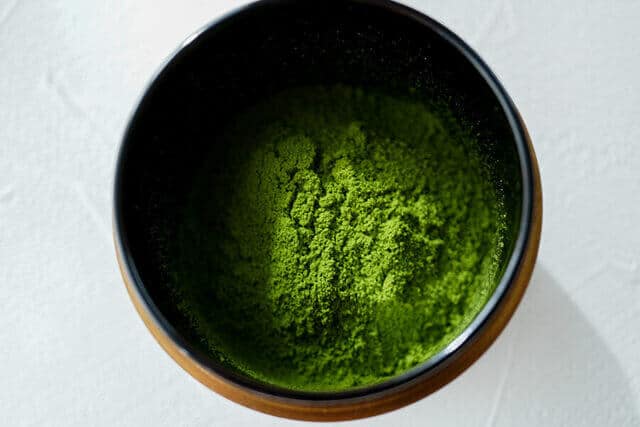
Tea, believed to have originated in China around 2700 BC, initially served as a Chinese herbal medicine. Its introduction to Japan occurred when envoys and monks returning from the Tang Dynasty brought back tea seeds. Initially regarded as a medicinal beverage for the elite, its popularity grew thanks to figures like Eisai, who introduced the matcha method and spread its consumption. Over time, tea evolved into a cultural phenomenon, particularly with the development of the tea ceremony by influential figures like Murata Jukou and Sen no Rikyu.
During the Edo period, Soen Nagatani, a farmer and tea businessman in Uji, devoted 15 years to perfecting the Uji method of tea manufacturing, resulting in a distinctive brown-to-green color. This method, passed down through generations, revolutionized tea culture across Japan. Unlike the previously familiar brown tea, brewed using conventional methods, the green tea produced with Nagatani’s technique gained immense popularity for its enhanced aroma and flavor. In the late Edo period, Edo tea merchant Kahei Yamamoto further elevated tea culture by introducing Gyokuro, a more luxurious variation, which gradually gained popularity nationwide. Nowadays, Japanese tea, particularly matcha, enjoys global recognition, with “MATCHA” becoming a universal term, symbolizing Japan’s contribution to the world of tea.
What is Sado?
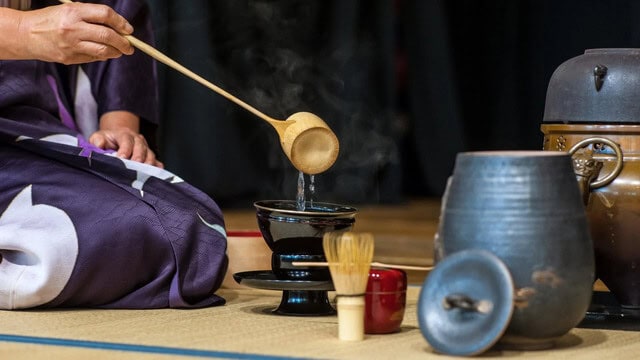
Before you attend a tea ceremony yourself, let’s look at the basics of this traditional practice.
Sado is the Japanese tea ceremony, also known as cha-no-yu or chado, the Way of Tea. It is a traditional and highly ritualized way of serving and drinking green matcha tea, involving a host and one or more guests. With a code that prescribes everything from the room decor to the topics of conversation, sado is an art that takes a lifetime to master, though its graces can be appreciated by anyone.
Sado Tools
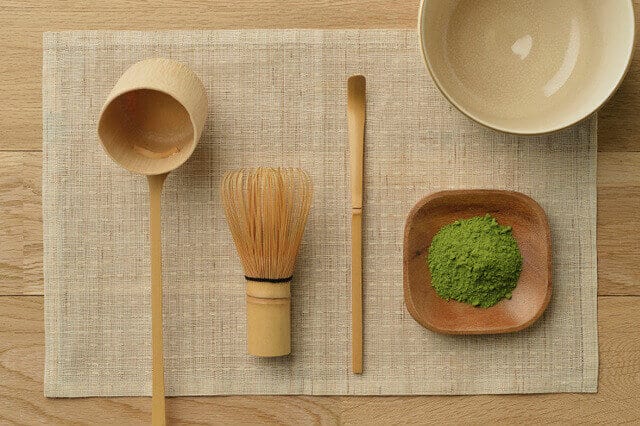
While the specific tools used in each tea ceremony will vary depending on the host and their school, certain items are common to nearly all traditions.
- Chawan (tea bowl) — A ceramic bowl large enough to be held with two hands. Usually a decoration or picture marks the front of the bowl.
- Chasen (tea whisk) — A short-handled whisk made of bamboo, used to combine powdered matcha with hot water in the tea bowl.
- Chashaku (ladle) — A small bamboo ladle used to scoop the tea powder from its container.
- Mizusashi (water jar) — Holds fresh water to mix with boiling water and to wash the tea bowl.
- Kama (kettle):An ironware kettle used to boil water.
- Fukusa (tea cloth):Used to clean the other tools.
- Natsume (tea container):Usually made of lacquerware, this small box holds the matcha tea powder.
How to brew Matcha?
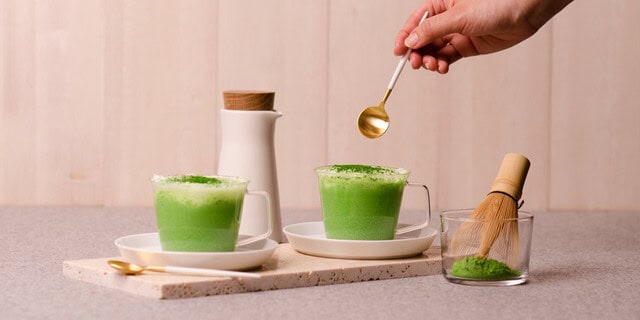
Soaking the Chasen
Soak the chasen in hot or cold water for about 20 minutes in a mug. This helps to loosen the bamboo, making it more flexible and less prone to breakage. Then, pour 1 teaspoon (approximately 2g) of matcha into the matcha bowl. Use matcha from Uji for this preparation.
Adding and kneading
Pour about 4 to 5 teaspoons (10cc) of water into the matcha bowl. This prevents matcha balls from forming and creates a mellow taste. Then, knead the matcha and water until it becomes a paste. This brings out the flavor of the matcha. Be cautious with hot water to avoid bitterness.
Pouring Hot Water
Pour about 50cc of hot water into a mug. The amount of hot water should be 1/5 to 1/4 of the mug.
Mixing Matcha and Water
Pour hot water into the matcha paste made earlier. Stir the matcha with a whisk for about 30 to 50 seconds. Start from the bottom, gradually increasing speed to create large bubbles.
Adjusting Foam and complete
While adjusting the foam around the middle, gradually bring it to the top and smooth out the bubbles on the surface. Matcha is now ready to be enjoyed!
Tools used for matcha
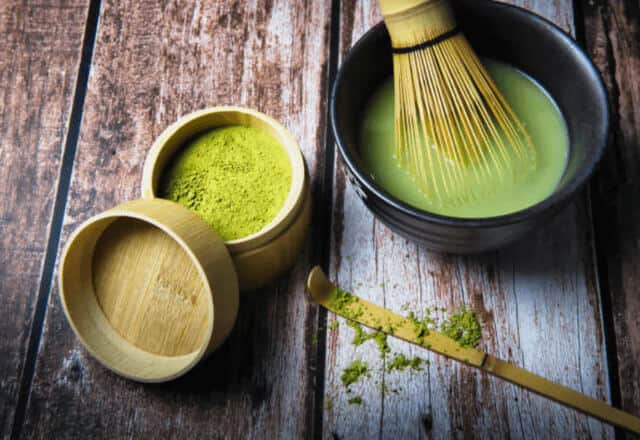
Chasen
When you think of matcha, many people probably think of tools like these. This tool used for stirring matcha is called a chasen. Chasen is currently mainly manufactured in Ikoma City, Nara, and is one of the best domestic brands.
Stored tea
Kuradashicha refers to fresh tea that is vacuum-packed and stored at low temperatures to age. Sencha and Gyokuro often sold as brewed tea, but there is matcha as well.
Japanese Matcha Tea FAQ
- How can you tell good quality matcha?
-
High-quality matcha will have a vibrant green color, fresh grassy aroma, and smooth taste with little bitterness. Look for matcha from Japan ideally with a label specifying the grade.
- Does matcha have caffeine?
-
Yes, but less than coffee (around 35mg per cup). It also contains L-theanine, an amino acid that promotes relaxation, so matcha provides a calmer energy boost compared to coffee.
Japanese Matcha Tea Recipe
How to make Japanese Matcha Tea?
If you pass it through a sieve in advance, it will be easier to boil.
You can also use a tea strainer to pour a dose into a tea strainer and use a tea scoop or measuring spoon to sift it directly into a matcha bowl.
When using commercially available water, choose soft natural water with low hardness. Commercially available natural water from Japan is generally soft water. It is best to run tap water through a water purifier, but if you don’t have one, remove the lid from the kettle and let it boil for a while to reduce the limescale odor. Also, no matter what kind of water you use, be sure to boil it once.
Amount of matcha: 2 tea scoops, a light teaspoonful (approx. 1.5g). Use a measuring spoon to measure approximately 1.5 amount of hot water. Use hot water which is approximately 70cc.
How to light it?
First, mix slowly to disperse the matcha on the bottom, then raise the chosen slightly from the bottom and shake your wrist firmly back and forth to prevent the hot water from spinning. When bubbles form, raise the tip of the chasm to the surface of the bubbles and move slowly to break up the bubbles. Finally, gently raise the whisk so that the bubbles rise in the center.
Where to buy Japanese Matcha Tea?
Veranda Cafe (縁側カフェ)
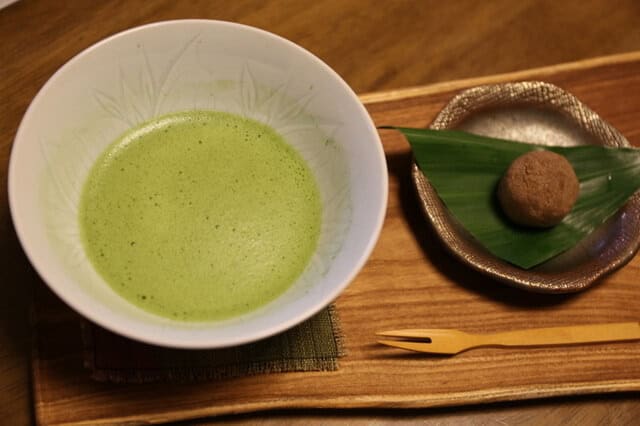
A Showa house, a Japanese-style house with a Western-style building built in 1932. The veranda cafe is run on the veranda of such a historically valuable house. The matcha you can taste in such a quaint shop is exceptional. Please enjoy the elegant bitterness. You can choose from single items or sweet sets. In addition to matcha, the drink menu also includes a matcha latte, coffee, black tea, and cafe latte. They also have cold drinks, so we recommend visiting on a warm day.
Ippodo Tea Shop “Kagi” (喫茶室 嘉木 (Cafe Kagi)
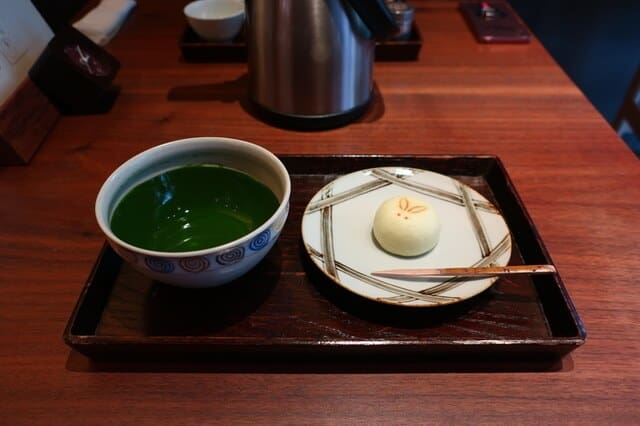
Ippodo is a Japanese tea specialty store with its main store in Kyoto. This is a long-established tea shop from Kyoto, the tea-producing region. They carefully prepared the matcha. There are several types of tea leaves available, so it’s a specialty store. This is called koicha, a very rich matcha. The taste of the tea leaves comes through directly.
Chacha Biyori (日本茶カフェ 茶々日和)
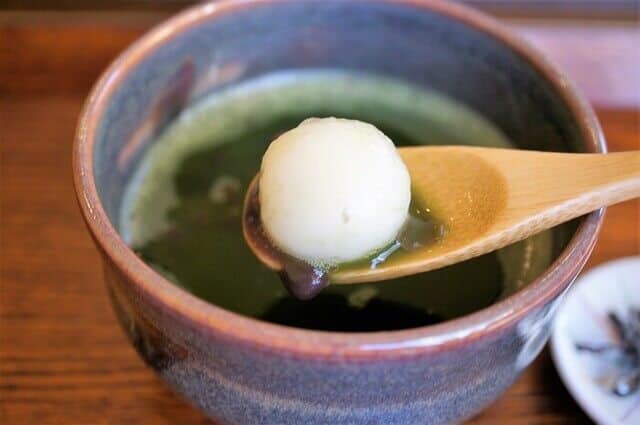
Dark roasted roasted tea that is popular along with matcha. It is rich in aroma and allows you to fully enjoy the taste of tea. It’s a highly satisfying set that also comes with snacks such as rice crackers. There are many other types of tea, so we recommend to visit many times and try different kinds of tea. You can also enjoy sweets, light meals, and lunch. This is matcha zenzai. The tea has a rich aroma and is perfectly balanced with sweetness.
Final Thoughts
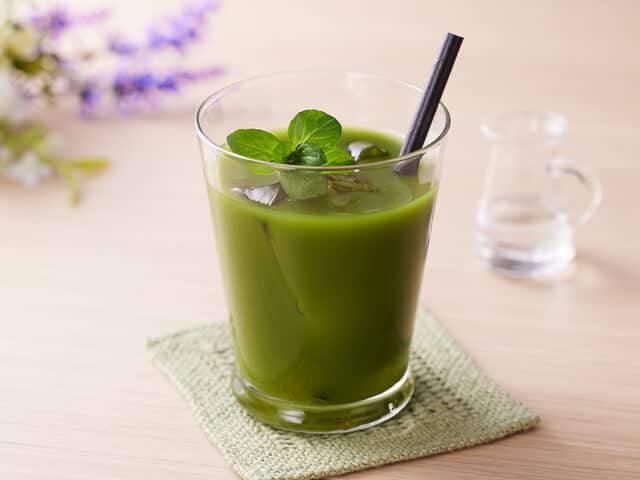
So next time you find yourself in Japan, be sure to explore the world of matcha. Whether you have it whisked traditionally during a tea ceremony or enjoy a frothy latte in a modern cafe, Japanese matcha tea offers a delicious and authentic taste of Japanese culture. With its unique flavor and rich history, matcha is an experience not to be missed.
You can check some Japanese tea drinks below that we know you would like to try too.



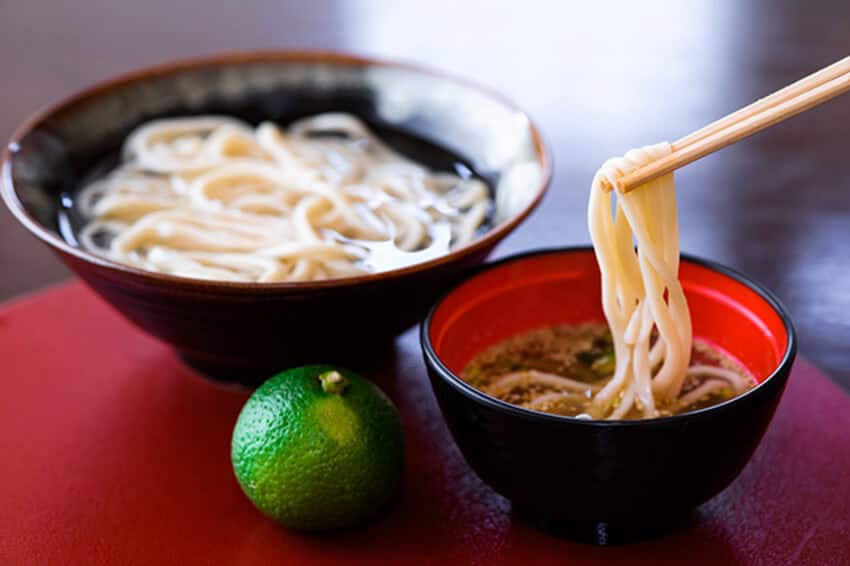
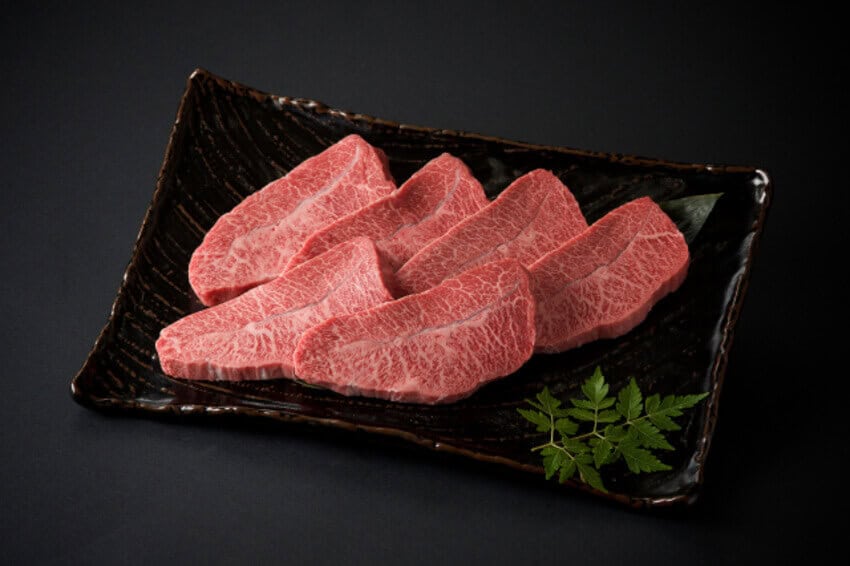

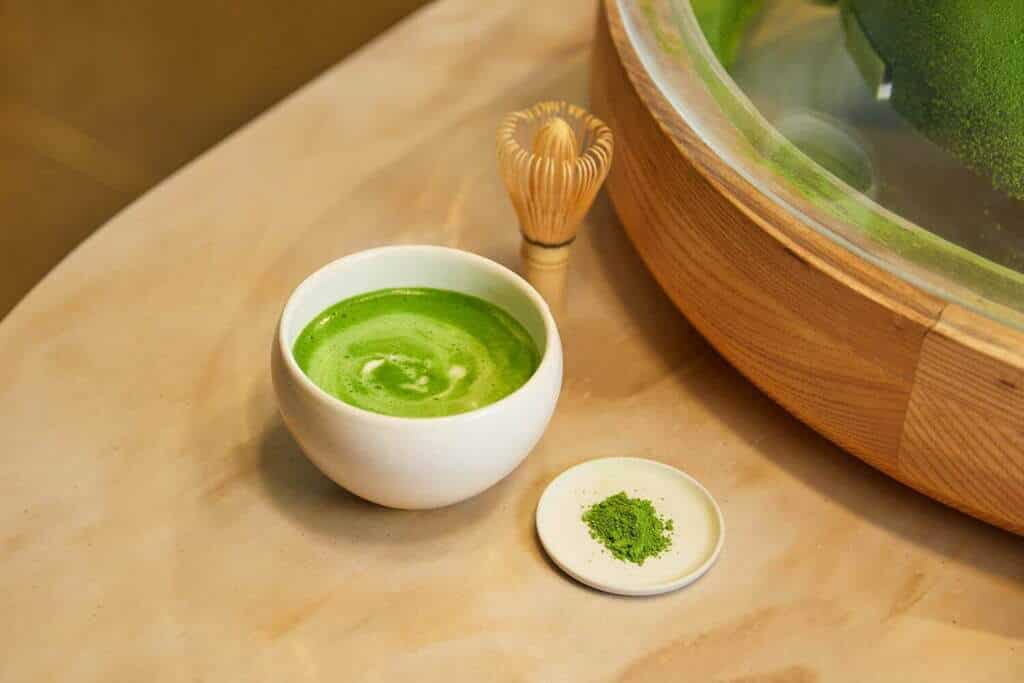
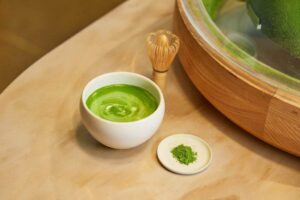
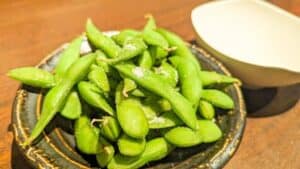
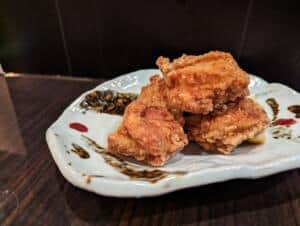
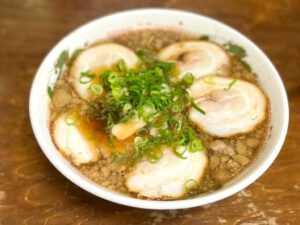
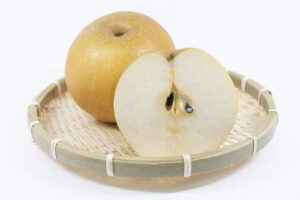
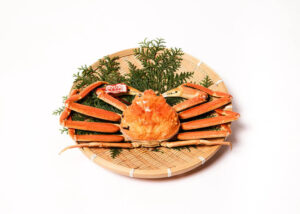
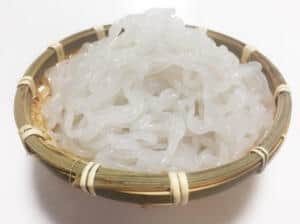
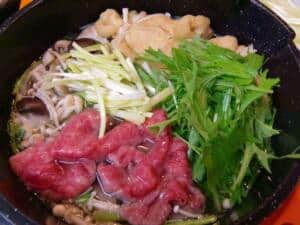
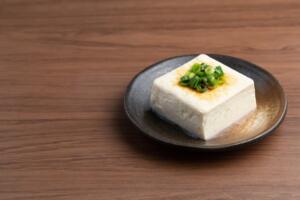
Comments